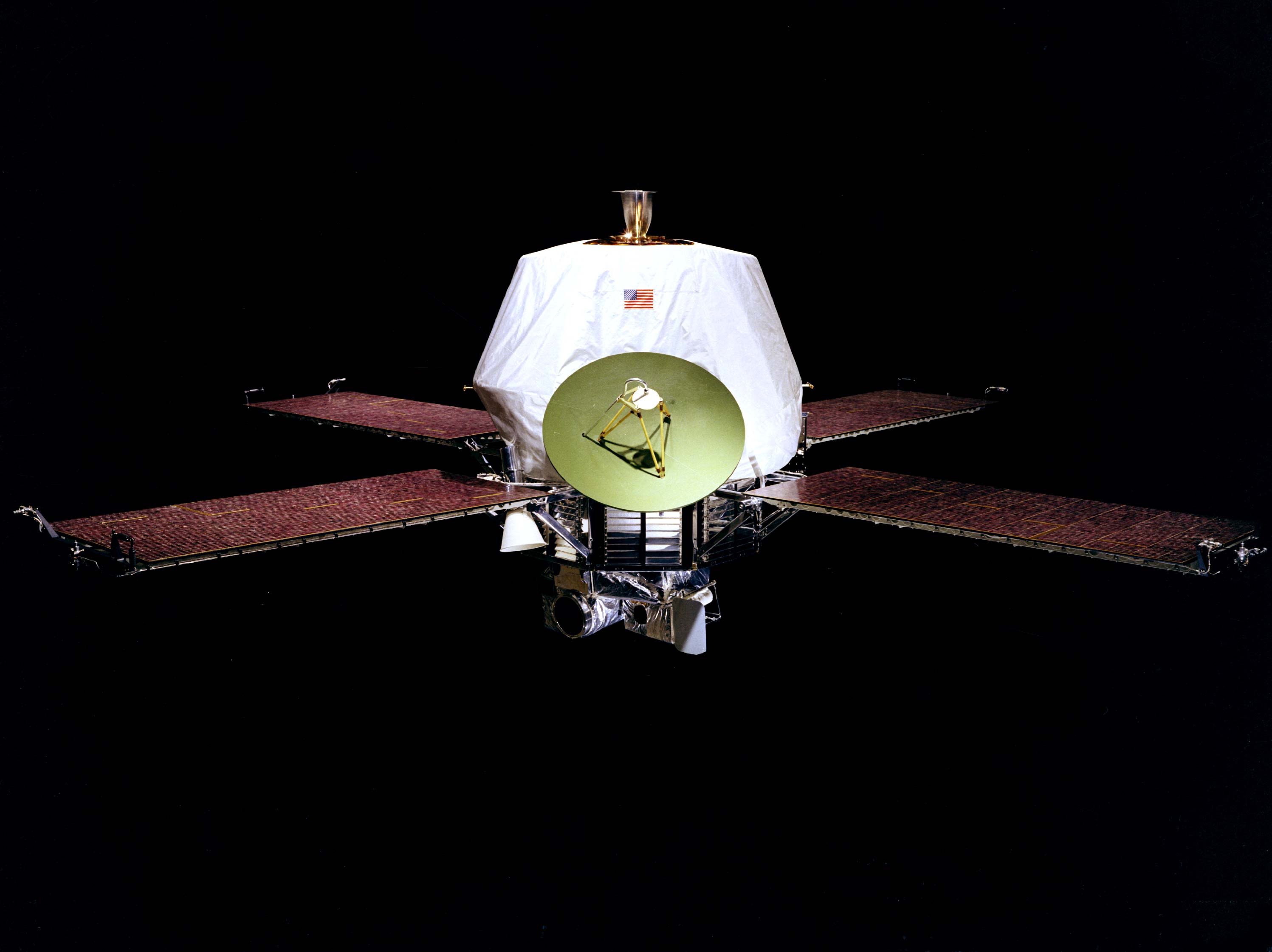Mariner Mars 1971 was a NASA mission designed to orbit Mars in the 1971-2. Two spacecraft were launched but the first failed to achieve orbit so Mariner 9 carried out the mission objectives. (See NSSDC for additional mission details.)
The LASP built Mariner 9 (M9) Ultraviolet Spectrometer (UVS) was an Ebert-Fastie design instrument with F and G-channel photomultipliers covering the 1100 to 3400A range. The 1100 to 1900A G-channel detector used a photomultiplier with a cesium iodide photocathode and a lithium fluoride window. The F-channel detector covered 1900 to 3400A using a cesium telluride photocathode and a sapphire window. The UVS was mounted on a scan platform such that its F-channel 0.2 x 0.5 deg field of view and its G-channel 0.25 x 2.5 deg field of view were co-aligned with the Imaging (TV) and other platform instruments. During orbital operations the long dimension of the G-channel field of view was aligned parallel to the Mars limb, thus optimizing the atmospheric observations of constituents with small scale heights. The F-channel field of view provided a 10 by 30km surface area during topographic mapping observations. The full wavelength range of both detectors was scanned every 3 seconds.
The UVS scientific objectives were a)ultraviolet cartography and b) ultraviolet aeronomy. Ultraviolet (uv) cartography included measuring the atmospheric pressure (yielding surface topography) over a major portion of the planet, measuring the local ozone concentration (the search for biological activity), and measuring the Martian photometric function in the uv (to understand many cloud features seen in ground based telescopes). The second objective, uv aeronomy, consisted of time and position dependent measurements of the upper atmospheric composition and structure, ionospheric composition and variation, and measuring the atomic hydrogen distribution and it’s escape rate from the exosphere. These objectives were successfully achieved. See the Publications for additional science discussion and instrument information, and the GoogleMars page for an interactive presentation of these data sets.
The UVS raw spectra, calibrated reflectance, and geometry data are available here along with additional planning and sequencing, cataloging, calibration, and software products.

